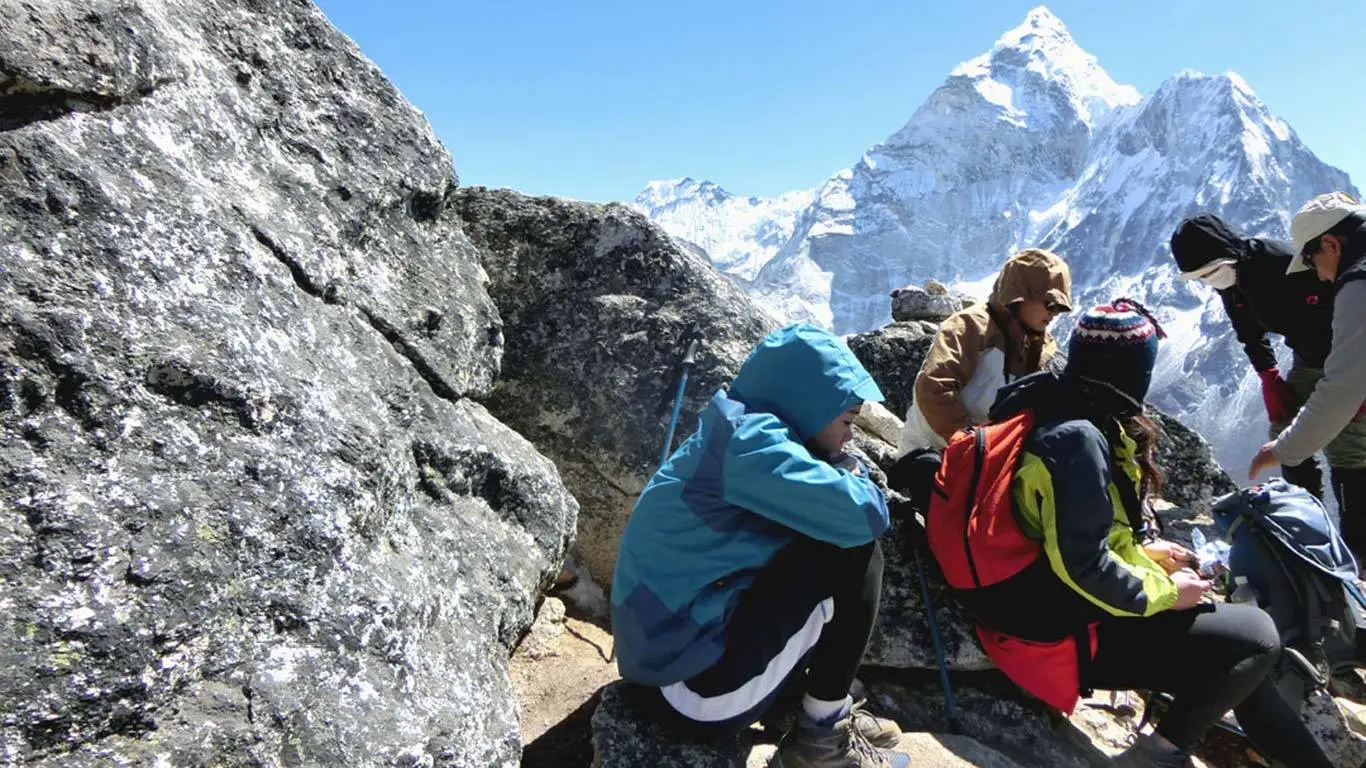Acute Mountain Sickness In Nepal – Himalayan Sickness:
The major point of the trekkers who trek for the first time in Nepal is fear of AMS(Acute Mountain Sickness In Nepal). Mountain Sickness is a very serious problem that can affect anyone.
Being aware of the symptoms, and abiding awareness of symptoms can reduce the chances of affliction. Most of us can adjust to living at a higher altitude and give sufficient time (acclimatization is the process of adaptation) but it depends on different persons. Especially in the adventures like EBC trek, Manaslu circuit trek, Annapurna circuit trek, and Kanchenjunga base camp trek trekkers are highly prone to suffer from Mountain sickness.
Some suffer headaches at 2500 m and some suffer happily twice in height without any discomfort. It is not possible to predict in advance who among the first-time trekkers will suffer from it, or when. Physical fitness only benefits neither its young fullness. It will appear young people more than old people.
The best way to avoid AMS is to make a steady ascent to about 3000m, then ascent no more than 400m per day after that. And “Climb high sleep low” is important. It is better to plan a rest day to allow the body to adopt the reduced oxygen levels in the mountains.
Another best consideration is liquid intake. At higher altitudes, it is necessary to drink at least 4 liters a day to avoid dehydration. And to urinate half a liter a day. Yellow color urine signs that liquid needs to be increased.
Mountain sickness can be detected in several ways. Headache, loss of appetite, extreme fatigue. Some trekkers also find that they suffer disturbed from sleeping and become breathless.
When these symptoms develop they do not go higher until the symptoms have gone away. If these signs of leaving after a day instead become worse it is important to descend to lower levels. Do not take strong painkillers or sleeping tablets as these can mask the symptoms.
The worst condition was indicated by vomiting, severe headache, lack of coordination, bubbly breathing, wetness, increased tiredness and breathlessness, and even rest. Such symptoms warn of a very serious condition (fluids can be lungs or brains). Which if ignored can lead to a lack of consciousness and death within 12 hours.
The only care is descending at once even at night if necessary until symptoms decrease or completely disappear. The improvement is experienced at just 300m of descending. Continue with your trek when signs of improvement indicate that it’s safe to do.
Remember that do not go too high too fast and descend promptly if ill.
If you have not been to altitude before and have no acclimatization visit your doctor before trekking to high altitude. He may prescribe half a Diamox tablet (125 mg) to be taken every 12 hours a day.
Diamox does not mask the symptoms of AMS, so if you still get them, it is essential to get them accordingly. Many people taking the drugs experience mild tingling in their hands and feet.
These are not signs of developing AMS. You should notice that increased urine output, through Diamox is a diuretic and is used to reduce fluid retention.
In some places of Nepal, a medical Aid post run by volunteers from the Himalayan Rescue Association (HRA) is situated in Manang, Pheriche.
Some doctors are in attendance during the high season. In the afternoon they give a free lecture on AMS with a lot of useful advice. This is well worth attending for tourists. They give some medical consultations with some fees too.
There are some hospitals along the trekking routes of Nepal. Evacuation from more remote areas of some trekking routes is difficult to organize and extremely expensive to carry through. The rescue also takes time because of weather conditions and insurance supporting documents and communications systems.
Rescue is only attempted when a guarantee of sufficient payment has been made after Acute Mountain Sickness in Nepal. Independent trekkers have less chance of having a positive response to a call for airlift evacuation and the room for hotels and tea houses.
The experienced guide helps very quickly for them in case they are in danger. So Mission Himalaya Treks And Expeditions PVT Ltd. suggests you join a good company to support you the whole trip to Nepal.
Birendra Duwadi by profession a trekking and tourist guide and an enterpreur whose passion is trekking in the himalayas. Started Mission Himalaya Treks in 2015 with a new vision to introduce Nepal's Himlayas to the world. His vision is to explore and documentation new trekking routes . Birendra leads Mission Himalaya, a company that change the qualities of trekking in Nepal.








